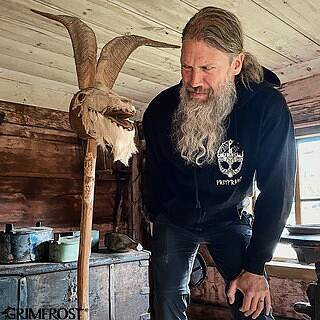The tale of Thorkell the Tall is astonishing in several ways. Not only did his known career span over several decades, a feat in itself considering that people rarely lived past the age of 40, but he was also involved in many significant events of that time. Here is part one of his tale.
Built for success: The Vikings were a tall people and one can only imagine the stature and physique of Thorkell, who became known as Thorkell the Tall (Old Norse: Þorkell inn hávi). He was born in southern Sweden in the late 950s to a father who also stuck out of the crowd with his cone-shaped helmet made from 4 pounds of pure gold. The helmet must have overshadowed all his father’s deeds since it earned him the name Strut-Harald (Cone-Harald).
There was no shortage of powerful Vikings in Thorkell’s family. How about Harald Bluetooth (uncle) and Gorm the Old (grandpa) – the first King of Denmark. The expectations on Thorkell were probably sky high, so he kickstarted his tale of fame and fortune through joining the ranks of the Jomsvikings – a legendary company of badass Viking mercenaries known for their unwavering faith in the old Norse gods, such as Odin and Thor.
Fight in a hailstorm: One of Thorkell’s first major battles was the Battle of Hjörungavágr in the year 986. Internal Viking business concerning territories and paganism versus Christianity led to the conflict where the Jomsvikings, led by Thorkell’s brother Sigvaldi, attacked Norway with 60 ships packed with warriors. King Haakon of Norway mustered thrice the number and faced the attackers with 180 ships. It must have been a vicious and brutal encounter at sea, fought according to legend in a hailstorm.
The Jomsvikings were outnumbered and faced defeat. Commander Sigvaldi order a retreat which probably saved a lot of lives, however, sources reveal that some of the Jomsvikings deemed the order as cowardly. He might have after all robbed a few from their ticket to Valhalla…
Age ain't nothing but a number: Thorkell eventually took his brother’s place as the commander of the Jomsvikings and their legendary stronghold Jomsborg. He must have felt pretty good about himself, while trying to fit his massive frame into the commander’s throne. He was now a lord with the power to muster a horde of feared warriors.
The years passed, but age didn’t slow Thorkell the Tall down. The man was in his 50s when he attacked England in 1010 and landed on the shores of the river Orwell with a large army lusting for battle. The Vikings crushed the local forces sent from Ipswich and continued to pose a threat until the English finally chose to get rid of Thorkell and his horde through paying an unusually large sum of Geld (extortion money) in 1011. This was the campaign that Ulfr of Borresta from the earlier post took part in.
Trouble will rain on those who are already wet: Only a year had passed when Thorkell’s men captured Archbishop Ælfheah of Canterbury who had been a central figure in the negotiations around Geld payments. The captors saw an opportunity to fill their pockets with silver through demanding a ransom for their hostage. Things didn’t go their way though – the Vikings were dealing with a stubborn and pious man. After 7 months of captivity, Ælfheah still refused to allow a ransom to be paid for his freedom on the grounds that he didn’t want to further impoverish his countrymen. The captors had reached the end of their patience and killed Ælfheah during a drunken feast fuelled by southern wine on April 19th 1012 at Greenwich. Archbishop Ælfheah’s death appears in the Anglo-Saxon Chronicle:
“… the raiding-army became much stirred up against the bishop, because he did not want to offer them any money, and forbade that anything might be granted in return for him. Also they were very drunk, because there was wine brought from the south. Then they seized the bishop, led him to their “hustings” on the Saturday in the octave of Easter, and then pelted him there with bones and the heads of cattle; and one of them struck him on the head with the butt of an axe, so that with the blow he sank down and his holy blood fell on the earth, and sent forth his holy soul to God’s kingdom.”
Some sources mention that the final, killing blow with the back of an axe was delivered as an act of kindness by a Christian convert by the name of Thrum. Another contemporary report tells that Thorkell the Tall attempted to save Ælfheah from being killed by offering the mob everything he owned except for his ship, in exchange for Ælfheah’s life. The offer was clearly ignored by the angry, drunken warriors.
Thorkell felt that things were getting out of hand. He clearly couldn’t control his men, so he did what any mercenary would have done – he and his loyalists switched sides to the force that offered the best conditions and subsequently found themselves in the service of the English king Ethelred the Unready.
To be continued…

 Jomsvikings fight under a rain of hailstorm in the Battle of Hjörungavágr
Jomsvikings fight under a rain of hailstorm in the Battle of Hjörungavágr
 Archbishop Ælfheah asked for advice
Archbishop Ælfheah asked for advice 




























































Hinterlassen Sie einen Kommentar